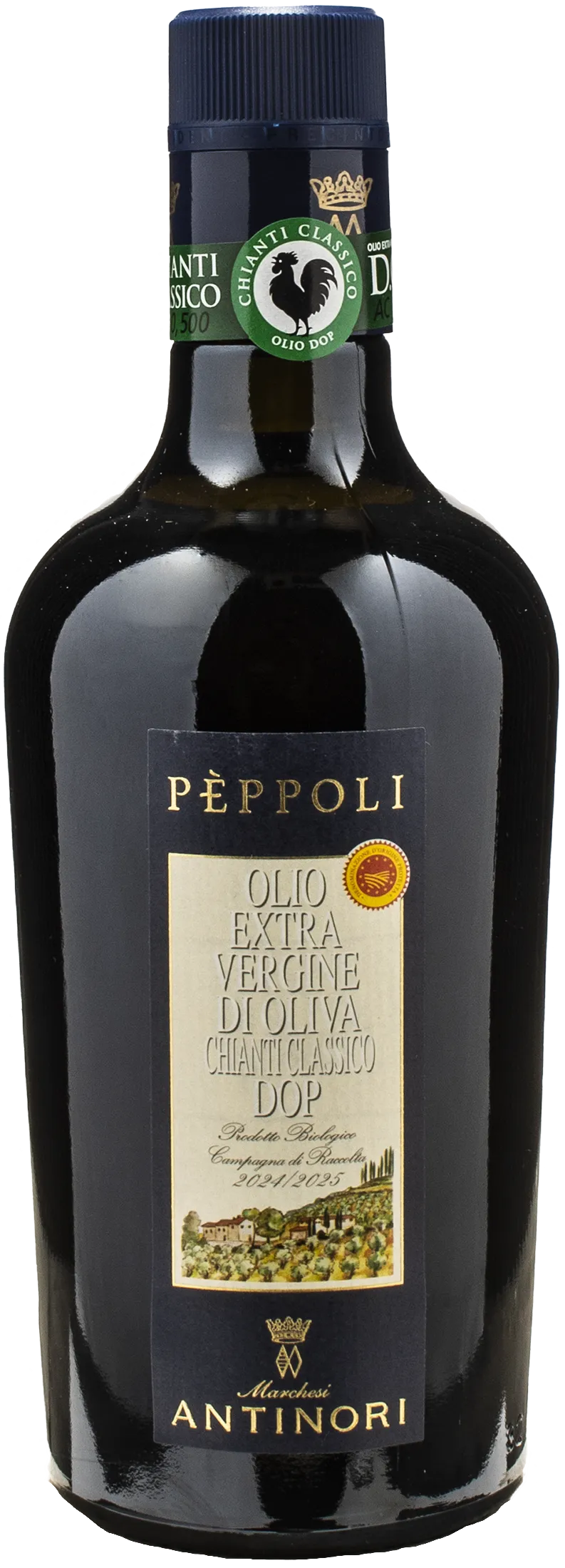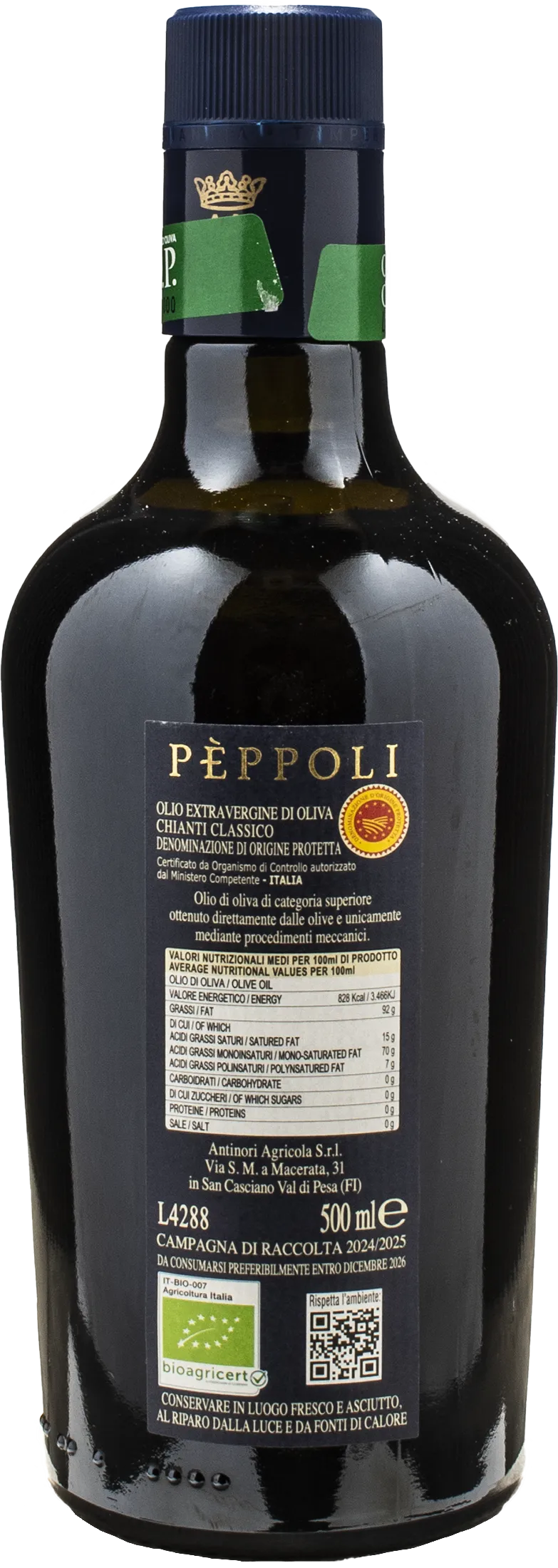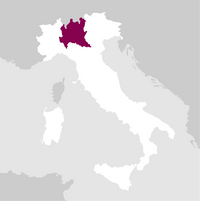Description
L'huile Pèppoli est une huile biologique. En 1994, le domaine a adhéré au projet de culture biologique, selon lequel les principes chimiques de synthèse sont totalement exclus, tant pour la protection des plantes que pour la fertilisation. Après la période de "conversion" de deux ans prévue par la législation en vigueur et sous le contrôle du Consortium pour le contrôle de la production biologique, organisme agréé par le ministère des ressources agricoles et forestières, la production de 1996 a permis d'obtenir pour la première fois la "certification biologique" pour l'huile de Pèppoli.
- Année de création: 1385
- Oenologue: Renzo Cotarella
Mais c'est au XVIe siècle qu'Alessandro Antinori, banquier et négociant, fait connaître le vin de ses domaines en Italie et à l'étranger, voyageant de Lyon aux Flandres, de l'Espagne à Alger.
Le vin est resté la passion et l'activité principale de la famille au point qu'en 1898, la "Fattoria dei Marchesi Lodovico e Piero Antinori" a été fondée par les deux frères Lodovico et Piero, fils du marquis Niccolò - descendant direct de ce Niccolò qui, en 1506, avait acheté le Palazzo Antinori et qui avait déjà beaucoup fait pour faire connaître les vins toscans dans le monde entier et en faire un produit de haute qualité. En 2023, au début du mois de février, Villa Antinori Toscana IGT 2019 a été nommé troisième vin au monde, le seul vin italien, dans le Top 10 Values 2022 du Wine Specator : la liste des 10 vins qui, selon le magazine américain, représentent l'excellence mondiale en termes de rapport qualité-prix. Lire la suite


| Nom | Marchesi Antinori Peppoli Olio Extra Vergine di Oliva Chianti Classico 0.5L 2024 |
|---|---|
| Millésime | 2024 |
| Format | 0,50 l |
| Pays | Italie |
| Région | Toscane |
| Fournisseur | Marchesi Antinori |
| Climat | La Tenuta Pèppoli est située dans la région du Chianti Classico, dans la commune de San Casciano Val di Pesa, à une altitude de 300 à 350 mètres au-dessus du niveau de la mer. |
| Composition du sol | Les sols sont composés de dépôts marins de l'ère pliocène. |
| Récolte | Les olives, qui proviennent d'oliveraies sélectionnées de manière appropriée, sont récoltées exclusivement à la main à un stade précoce par rapport à la pleine maturité et sont envoyées au pressage strictement dans les 12 heures suivant leur arrivée au moulin. |
| Technique de production | Le cycle de transformation, après l'élimination des feuilles à l'aide d'une défoliatrice, prévoit le broyage à marteaux ; la pâte ainsi obtenue passe ensuite au malaxeur où, à une température comprise entre 20 et 22 °C et pendant une durée variant entre 10 et 15 minutes, les particules d'huile s'agrègent entre elles ; elles commencent alors à se séparer de la pâte avant de passer à la phase d'extraction proprement dite à l'aide du décanteur. Le processus se déroule ensuite à basse température, sans ajout d'eau, afin de renforcer les caractéristiques aromatiques et organoleptiques. |
| Allergènes | Contient des sulfites |




